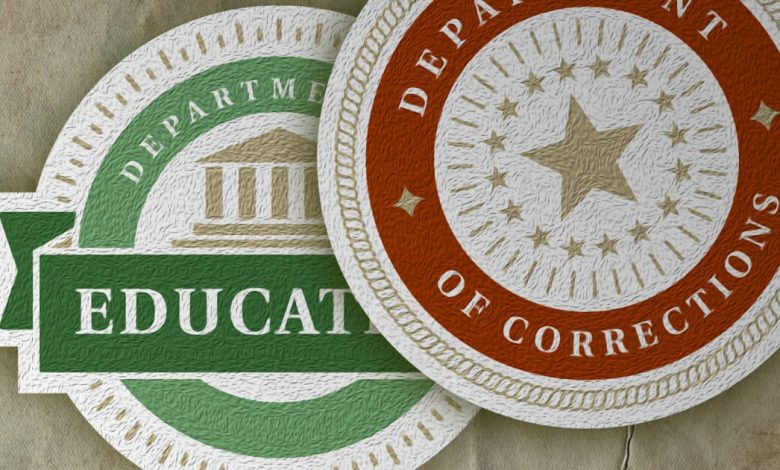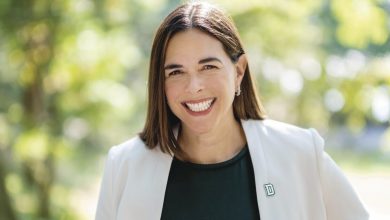Corrections Agencies Would Get Broad Power Over Prison Education. Advocates Say That’s a Problem.

Advocates for incarcerated students are raising concerns over who gets the final say on which education programs in prisons will be eligible for Pell Grants.
Under regulations proposed last week by the U.S. Department of Education, the local, state, and federal agencies that oversee prisons will decide which programs are available to the nearly half a million incarcerated people who will be newly eligible for Pell Grants next year.
But that, advocates and higher-education experts say, is not what correctional agencies are designed to do. Advocates for prisoners worry that corrections agencies are not equipped to evaluate the educational quality of the programs, and that prisons will limit the available courses because they’re more concerned with security than access to knowledge.
“Prisons were meant to hold people, not educate them,” said Monique O. Ositelu, senior policy adviser for data and research on higher education at New America, a research organization.
The proposed regulations concern a 2020 law, are planned to take effect next July, and eventually will replace the Second Chance Pell program, which this fall will allow up to 200 colleges to provide the educational programs. The new law will allow more incarcerated students to use the need-based federal financial aid, including those who have been sentenced to life without parole or are facing the death penalty.
Notably, the law prohibits for-profit colleges from offering Pell-financed programs for incarcerated students. The law also requires that each program’s credits be transferable to at least one other college in the state where the program is offered. And the law requires assurances that prisoners will be able to meet any state-licensing mandates for a program after they are released.
Prisons were meant to hold people, not educate them.
The regulations proposed last week outline a lengthy approval process for the programs that involves accrediting agencies and the Department of Education.
It will be up to corrections agencies, however, to determine whether the courses are “operating in the best interest of students.” To do that, the agencies will set benchmarks for each of seven standards, including the “experience, credentials, and turnover or departure rates” of the programs’ faculty members, job-placement rates, and earnings of released students who have completed the programs compared with high-school graduates’ earnings.
A big concern is that the agencies that oversee prisons are not necessarily equipped to make those assessments, said Bradley D. Custer, senior policy analyst for higher education at the Center for American Progress, who wrote about the regulations when they were drafted. In addition, the benchmarks the agencies set could vary wildly among, and even within, states, he said.
After that, the Education Department will evaluate the programs, Custer said, but it’s not clear that the federal department will undertake any extensive oversight.
The proposed rules would require correctional agencies to seek “input from relevant stakeholders,” including “representatives of incarcerated students, organizations representing incarcerated individuals, state higher-education executive offices, and accrediting agencies.” The corrections agencies could do that, for example, by forming an advisory committee, Custer said, but the stakeholder recommendations would not be binding.
In addition, he said, there would be no way for anyone to appeal a corrections agency’s decision to approve or reject an education program that would be eligible for Pell Grants in a prison.
‘This Really Isn’t a New Thing’
Corrections officials said they were already involved in evaluating educational programs. “This really isn’t a new thing,” said Karen Pojmann, communications director for the Missouri Department of Corrections, which has partnerships with more than a dozen colleges to offer courses on site or online. “We employ experienced corrections education staff who oversee the partnerships, support the programs, work through memoranda of understanding, help find grant funding, etc.,” Pojmann wrote in an email.
Amy Loyd, assistant secretary in the Education Department’s Office of Career, Technical, and Adult Education, said the new rules had been agreed to unanimously during negotiated rulemaking. They are expected to be finalized this fall after a public-comment period.
The department will encourage the correctional agencies to consider constituents’ feedback as part of a holistic process, Loyd said, but it lacks the jurisdiction to require prisons to approve Pell-financed programs.
Terrell Blount, director of the Formerly Incarcerated College Graduate Network, a nonprofit organization, said an advisory committee would be a good idea if it created transparency in the process and prevented prisons from making backroom deals with colleges just to increase enrollment.
But the proposed rules, he said, don’t address a host of other challenges, such as prisons that prioritize security and containment over the quality of education. For example, he said, prisons already make it difficult to offer STEM programs because such courses require technology that prisons don’t allow or equipment, such as test tubes, that they want to restrict.
Rebecca Ginsburg, an associate professor of education policy and landscape architecture at the University of Illinois at Urbana-Champaign, said there was an “inherent conflict” in giving correctional agencies oversight of educational programs. The Education Justice Program, which she directs, offers courses in several prisons in Illinois, though none are eligible for inmates with Pell Grants.
“It will be tempting for some departments of corrections,” she said, “to use that discretion to make choices that serve their perceived interests in maintaining order and security.”
For example, the liberal arts are meant to encourage people to think and act outside the box, she said, and “those are the kinds of things many departments of corrections find threatening.”
“There is definitely something in tension,” she said, “between higher education and keeping people in cages.”
Source link






